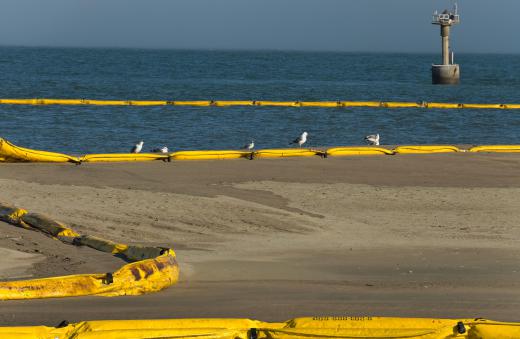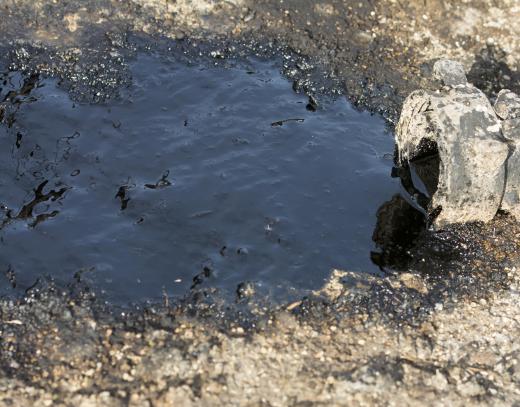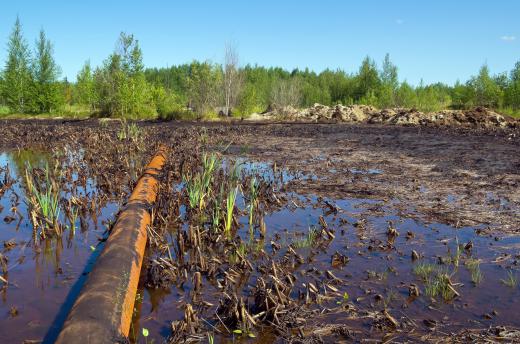Oil remediation is the process used to clean up oil spills. Oil spills threaten the health of humans and are harmful to the environment and may be remedied in a variety of ways. The threat level and the exact type of oil remediation used depends on the size of the spill, the type of oil, the location of the spill and the climate where the spill occurs.
The most preferred method of oil remediation, especially in the water, is to leave it alone and let it naturally disintegrate. When there is no danger of spills affecting marine wildlife or coastal regions, the wind, sun, ocean currents and waves will effectively break up and evaporate most kinds of oil. The lighter the oil the easier it will break down naturally.

Containing the oil with booms and collecting it with skimmer equipment is another method of oil remediation for spills in the water, except for the high seas. Booms may be made of a wide array of materials and come in a large variety of shapes. Depending on the size of the spill, they may be placed in deep water, float evenly with the water line or sit above the water line up to three feet (one meter). Once the oil is contained, it is scooped or sucked out and placed in nearby containers or vessels. In some cases it may even be placed on shore for easier cleanup.

In cases where oil remediation takes place within the first few hours of the spill, and sea grass and deep-water coral are not in danger, dispersant products may be used. Dispersants work to break up the oil so it may biodegrade more quickly. When the oil is broken up it allows it to mix with the water, which promotes evaporation and consumption by bacteria.

When oil, petroleum and other hydrocarbons are spilled in large and small amounts, they may be cleaned up by using a PRP (petroleum remediation product). PRPs were developed by NASA (The National Aeronautics and Space Administration) and come in different forms. PRPs consist of tiny balls of treated wax which have added nutrients, such as nitrogen and phosphorus, that fertilize the microorganisms which eat the oil. Powder PRP products are scattered over a spill to quicken the natural biodegradation process. The oil latches onto the balls when it comes in contact with the wax while the nutrients help promote the growth of bacteria which consume the oil.
